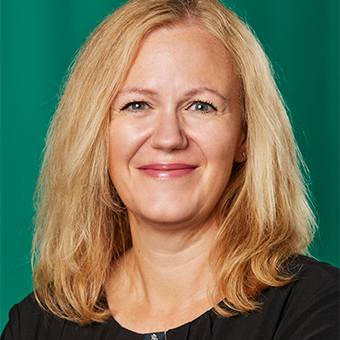Off to the Moon
Robotics Team of the FZI Research Center for Information Technology in Karlsruhe Wins International ESA Challenge
Research focus: Applied Artificial Intelligence
The team of the FZI Research Center for Information Technology from Karlsruhe, Baden- Württemberg has won the ESA-ESRIC Space Resources Challenge. The prize: 500,000 Euros for research – and the prospect to a real mission to the Moon. That’s one small step for research, one giant leap for the FZI.
The European Space Agency (ESA) and the European Space Resources Innovation Centre (ESRIC) have announced the winners of their latest international robotics competition – the ESA-ESRIC Space Resources Challenge. Finding innovative approaches and solutions for searching and prospecting resources on the Moon was the goal of the challenge. The winner of the challenge is the consortium ARISE led by the FZI – an alliance of robotics, geology and space experts of the FZI Research Center for Information Technology in Karlsruhe, the Swiss Federal Institute of Technology in Zurich (ETH Zurich), the University of Zurich, the University of Basel and the University of Bern. The winning consortium will receive 500,000 Euros for further research and will have the chance to become part of a real ESA-ESRIC Moon mission. The winner was announced on April 19th, 2023 in Luxembourg during the Space Resources Week. “We are incredibly proud of our researchers. The time and effort they have put in this challenge is now rewarded with this great prize”, says Jan Wiesenberger, Executive Director of the FZI.
Innovative solutions for the exploration of space
The aim of the ESA-ESRIC Space Resources Challenge was to find innovative solutions for the exploration of resources on the Moon’s surface. The multi-stage competition included various partly unknown challenges that had to be solved remotely by mobile robots – just like on a real Moon mission.
One particular challenge was the time-delayed and sometimes unstable communication link between the Mission Control room and the robots that was created by the challenge organizers. The communication issues were therefore similar to a connection from Earth to the Moon over a distance of 384,000 kilometers. Beyond that, the researchers had no visual contact or access to the robot systems.
The teams had the task to autonomously explore, map and navigate in a previously unknown lunar landscape. In doing so, the robots were supposed to localize potential resources and examine them more closely.
Initially, twelve teams participated in the competition
In the beginning, twelve teams competed against each other in the first phase of the challenge in an initial field test on a Moon-like terrain in the Netherlands. Based on the results shown in this first phase, five teams were selected to compete again in the finals: the FZI Research Center for Information Technology, ETH Zurich together with the University of Zurich, Lukasiewicz – PIAP, Mission Control Space Services and Space Application Services, a research network of the University of Luxembourg, Dynamic Imaging Analytics, the La Palma Research Centre, Université de Lorraine as well as the Open University.
In the final round, the FZI faced these challenges with a team consisting of three mobile robots: the walking robots Spot and ANYmal as well as the four-wheeled robot Husky equipped with an instrumented robot arm. The unique selling point was the software developed at the FZI. It enabled the three robots to complete the tasks both mostly autonomously and in a cooperative way. The three robots independently divided the tasks among themselves while considering their individual abilities. Two walking robots quickly explored the entire terrain and created a list of interesting targets for a detailed resource analysis by Husky. Husky could then perform an X-ray fluorescence analysis and a chemical analysis as well as take detailed close-ups. This enabled the FZI to successfully find the invisible titanium dioxide deposits hidden in the terrain and mark them in the created map. “My personal highlight was being able to take a lot of time for questions from the jury during our competition run because our robots acted autonomously like we planned. They did not need any input from us,” says Tristan Schnell, project lead of the FZI team.
After the field test and in a final step towards space, the competitors had to submit a proposal to ESA on how to enhance their robots’ space readiness. Based on the field tests and the proposal, the consortium led by the FZI was announced as the winner. “I am very pleased that we and our robotics colleagues from ETH Zurich as well as further Swiss partners were able to develop an exciting concept in which a team of autonomous walking robots plays the key role. I am even more pleased that we now have the chance to work together on bringing these technologies one step closer to the Moon!” says Dr.-Ing. Arne Rönnau.
Video material of the FZI’s contribution to the competition
About the FZI
The FZI Research Center for Information Technology with its head office in Karlsruhe and a branch office in Berlin is a non-profit institution for applied research in information technology and technology transfer. Its task is to provide businesses and public institutions with the latest research findings in information technology. It also qualifies researchers for their career in academics or business as well as self-employment. Together with professors from different faculties, research teams at the FZI interdisciplinarily develop and prototype concepts, software, hardware and system solutions for their clients. The FZI House of Living Labs offers a unique research environment for applied research. The FZI is an innovation partner of the Karlsruhe Institute of Technology (KIT).
Download Press information (pdf):
Download Photos:
Please click on images to download.
More downloads & links:

